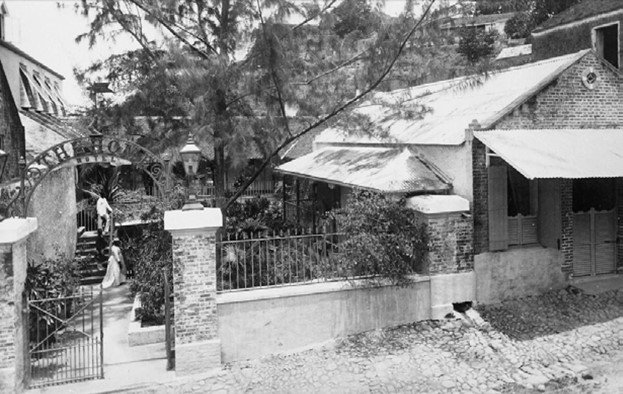About the Grenada National Museum
The Grenada National Museum celebrates the unique heritage and culture of the people of Grenada, Carriacou and Petite Martinique. It is dedicated to the preservation, interpretation and promotion of the country’s history and culture.
The Museum is the central attraction of an educational and visitor complex that hosts concerts, lectures, art exhibitions, and other special events throughout the year.
Come explore our history in one of the island’s oldest buildings in downtown St. George’s.
Vision
The Grenada National Museum aims to be the premier resource for residents, visitors, students and scholars who are interested in learning about the historical, natural and cultural heritage of Grenada, Carriacou and Petite Martinique.
Mission
The Grenada National Museum will collect, preserve, research, interpret, display and promote the historical, natural and cultural heritage of Grenada, Carriacou and Petite Martinique through its exhibits, educational programs, and cultural and historical experiences that will foster an understanding and interest in the heritage of the people of Grenada.
History of the Grenada National Museum
Home Hotel
The Grenada National Museum complex comprises several buildings dating to different time periods. The foundation of the building on the corner of Monckton and Young St. was built in the mid-1700s and functioned as the British colonial Constabulary, an adjunct to the Common Gaol between 1763-1904. (Contrary to popular belief, the Gaol was actually behind the current museum buildings, in the now relic buildings surrounding the Drill Yard and Sendall Tunnel; see below) (Martin 2007). Sometime between 1850-1880, the buildings were sold and renovated to become the Home Hotel, a luxury hotel that could accommodate about 30 guests.
Antilles Hotel
Beginning in 1932, the entire complex was acquired by the extravagant racketeer SA Francis and renamed Hotel St. George. This was when the larger building on Young Street was built atop the former Home Hotel (to the right of the gate, which is now House of Chocolate on the ground floor). It was then supposedly lost in a gamble to CFP Renwick, who renamed it Antilles Hotel, but upon his early death in 1940 was returned back to Francis. The name stayed, but by this time most hotels in town were moving out to Grand Anse. Upon SA Francis’ death in 1957, the Antilles Hotel continued for several years until eventually falling vacant. (Note that Jeanne Fisher’s historic souvenir shop Tikal opened in the new building on Young Street in 1956 and remained a popular business until closing in 2012).
The National Museum
Over a decade later, the derelict buildings had become an attraction for vagrants, so the Gairy government repossessed the land and renovated the complex for the Ministries of Education, Works, Fisheries, and various others, with space allocated for a new National Museum on the ground floor. In 2003, most of the government entities left, leaving the entire complex for use by the GNM. Since the passage of the Museum Act in June 2017, the Government of Grenada reinstated its responsibility for the National Museum and placed it within the portfolio of the Ministry of Culture, with a Board of Directors appointed by Cabinet. (Click here to view the Museum Act of 2017)
The Prison and Drill Yard
Behind the GNM is the remains of the old prison and Drill Yard, first constructed as the judicial court and common gaol (prison) during the French period. This usage continued after the British takeover in 1763, with enlargements in 1767 and 1855. In 1880, male prisoners were relocated to a new prison on Richmond Hill, and eventually women prisoners followed in 1904. The name derives from its use as a “Drill Yard and Rifle Range” for the Volunteer Force during WWI.
The relic prison buildings are easily viewed from the newly built Tricentennial Park and associated steps that connect the Drill Yard/Museum complex to Fort George. In 2011, the remaining buildings in use in the Drill Yard caught fire, and in 2012 it was acquired by NIS as payment for government debts.
-Written by J. Hanna, 2021
References
Laws of Grenada and the Grenadines, 1766-1875, Available at: https://archive.org/details/lawsgrenadaandg00grengoog/page/n478/mode/2up
“David Merriman, MB ’36.” Dividend: The Magazine of the Graduate School of Business Administration, University of Michigan, 1981. Available at: http://deepblue.lib.umich.edu/bitstream/2027.42/50729/1/1981-fall-dividend.pdf
Martin, John Angus. 2007. A-Z of Grenada Heritage. Macmillan Caribbean.


